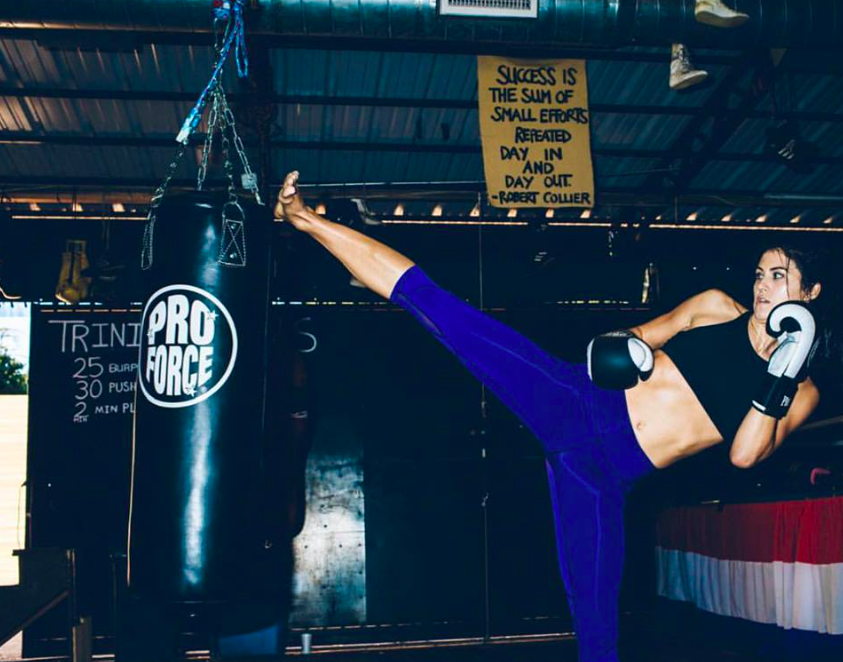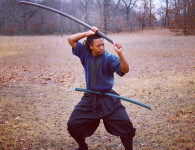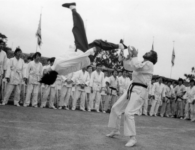Have you been thinking about taking up mixed martial arts, but you’re not sure where to start? You’re not alone. MMA is a thrilling sport, but it can also be intimidating if you’re not already part of that universe. It’s also the fastest-growing sport in the world, which means that it’s not always easy to determine what gyms will offer you the best training with the most experienced coaches and which ones are just in it to cash in on the latest trend.
That doesn’t mean that MMA isn’t worth trying, though. With a little bit of preparation and a clear head for what you want, taking lessons in mixed martial arts (as well as Brazilian Jiu-Jitsu, Muay Thai, wrestling, and other combat arts that have helped to influence the sport and its fighters) can be one of the most rewarding and most exciting things that you can do. Whether you’re looking for a new recreational outlet of you’re considering a future in the sport, here are some tips that will help you take that first step into the cage.
1. Do your research.
If you’re a fan of MMA, then you know how much work each fighter puts into each bout, from improving their physical fitness to researching their opponent’s combat style and drawing up a game plan. That’s also how you should prepare for starting MMA training. Start by researching the gyms in your area, and visiting the ones that look most promising to you (most reputable gyms will offer a free or low-cost trial period) . Then select the place that best meets your goals and needs. If you are looking for a new hobby, the gym that appeals to your personality will likely be the best bet. You’re going to have fun, so you should be able to enjoy yourself. If you’re seriously looking into pursuing MMA competitively, then look for a gym that works with professional fighters and has a number of high-level coaches on staff.
2. Make sure you’re ready.
Once that’s done, you should also make sure that you’re physically prepared to start training. This doesn’t mean that you have to be in fighting shape before you even start fighting, but most beginners classes at MMA gyms are for people with little to no experience in MMA and the various martial arts that influence MMA, not for people with a beginner’s level of physical fitness. The warmups alone are going to be harder than many non-martial arts workouts. So having a base in strength and conditioning is definitely going to help you jump into your new training in a much safer and more sustainable way.
3. Pace yourself
Once you have started training, you might find yourself wanting to go all in right way. It’s an understandable urge. You’re excited. You have so much to learn. And you want to learn it all at once! But there are no overnight sensations in MMA. Mastering mixed martial arts takes time – and it’s going to take you even longer if you push yourself too hard, too fast and wind up sick or injured.
Start by training seriously once or twice a week, mixed with cross-training like running, yoga, or bodyweight strength training on your off days. And make sure to take one day off a week for complete rest. You can’t improve if your body never has a chance to recover and repair. As you and your fitness improve, you can revise your schedule based on your goals and your time concerns.
4. Don’t be afraid to spar.
Finding the sweet spot in your early MMA training can be a bit like Goldilocks trying to find the right porridge. As we mentioned above, you don’t want to start too hard. That goes for what you do in class, too. Jumping into intense, full-body contact sparring in your first week and likely getting your butt kicked, for example, is risky for both your safety and your self-esteem. But waiting too long to participate in any sparring can also be detrimental to your game, too, because learning how to apply your new techniques in the heat of battle is a fundamental part of your MMA education. So while you shouldn’t head straight to the cage when you start your lessons, you can begin to participate in grappling-based sparring and “technical sparring” (performed at a slow pace with no power behind your strikes) almost immediately.
If you’re not sure what’s right for you, talk to your coaches. Any reputable MMA or martial arts instructor will know where and when to start pushing you in your training.
5. Don’t give up.
As fun and rewarding as MMA can be, it’s also HARD. Preparing to fight for as much as 25 minutes in the cage (which is the amount of time in a championship 5-round fight that goes the distance) is physically taxing. There are days where the brutal warmups alone are going to make you want to quit. And the mental demands might be even higher. Mastering the techniques from the many martial arts that influence MMA and learning to adapt them to mixed martial arts sparring and competition takes a lot of brain power – and putting them all together against another person is also going to challenge your psyche.
You’re going to get frustrated in class and in sparring. You’re going to lose. But that’s all part of the process. And, as any dedicated martial artist knows, you learn more from losing than you do from winning. So when you’re down and out, remember: you’re also getting better.





















